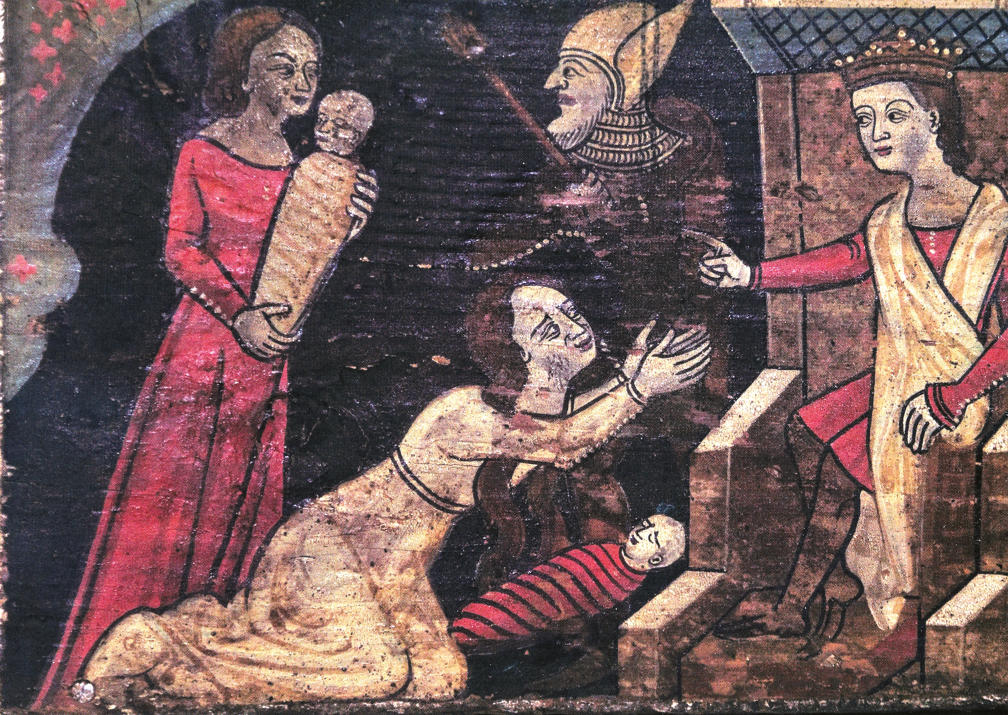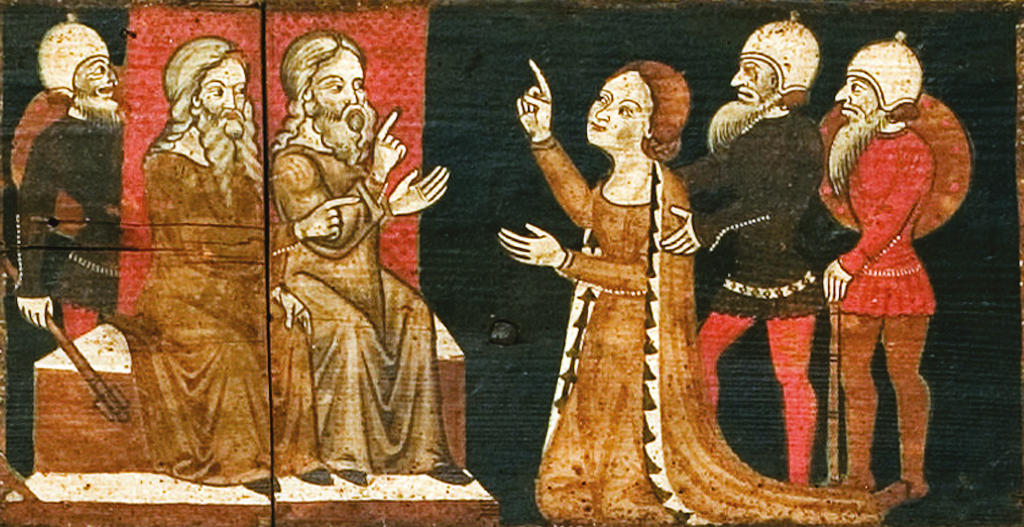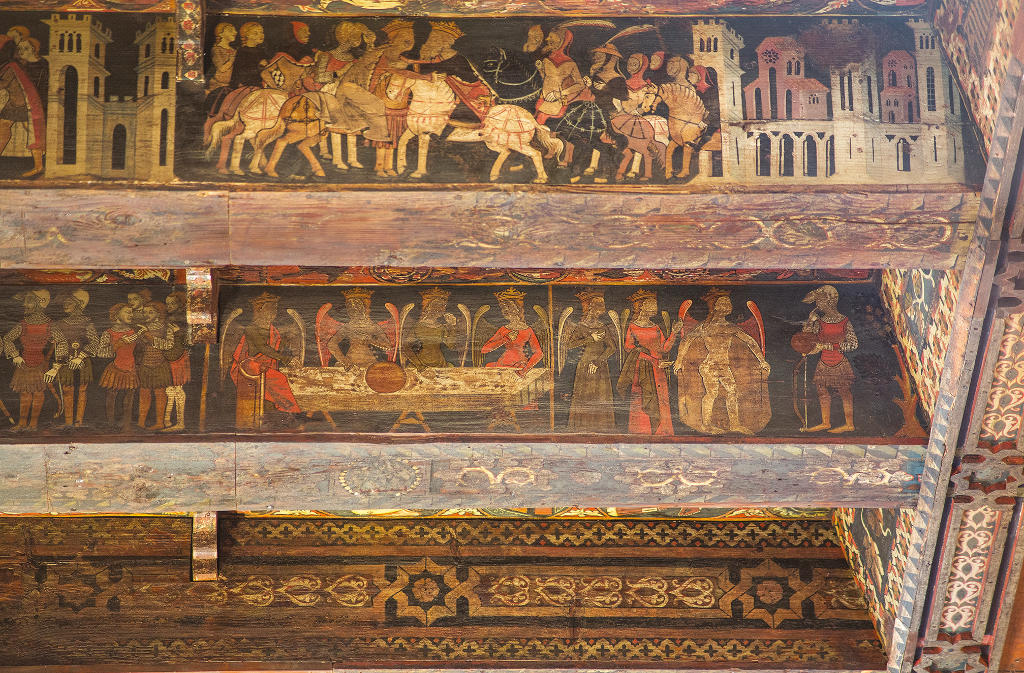Amazon Prime Student 6-month Trial

Find the perfect fit with Amazon Prime. Try Before You Buy.
The Wooden Painted Ceiling of the Palazzo Chiaromonte-Steri in Palermo, Sicily, 1377–1380AD

A larger image of Figure 6: The Judgment of Solomon, wooden painted ceiling, 1377–1380. Palermo, Palazzo Chiaromonte-Steri, Sala Magna (Photograph © Fabio Militello).

A larger image of Figure 7: Story of Suzanne, wooden painted ceiling, 1377–1380. Palermo, Palazzo Chiaromonte-Steri, Sala Magna (Photograph © Fabio Militello).

A larger image of Figure 8: Judith and Holofernes, wooden painted ceiling, 1377–1380. Palermo, Palazzo Chiaromonte-Steri, Sala Magna (Photograph © Francesco Vergara Caffarelli).

A larger image of Figure 9: Story of Helena of Narbonne, wooden painted ceiling, 1377–1380. Palermo, Palazzo Chiaromonte-Steri, Sala Magna (Photograph © Alberto Bougleux).
Admiral of the kingdom, member of an ancient and noble family, and vicar of the Crown of Aragón since 1377, Manfredi III proclaimed himself “dominus” in the
dedicatory inscription containing some precise information on the date of the beginning and the end of the work (1377–1380). The commissioned artists were
three Sicilian painters: Cecco di Naro, Pellerino da Palermo and Simone da Corleone.1
...
The decoration placed on the three visible sides of the horizontal beams alternate geometric and figurative motifs.
Sometimes subjects are part of a wider narrative, others are just a simple parade of minor characters.
Apart from the first four beams, the horizontal panels are mostly decorated with aniconic and geometric motifs, while the narration seems to begin right from the dedicatory inscription.
Here, on the horizontal side of the beams I, II and III of the first sector of the ceiling, three well known biblical episodes, whose main characters are women, are represented.
The story of the two mothers judged by Solomon (Figure 6), the story of Suzanne wrongly condemned as a victim of perjury (Figure 7)
and the story of Judith (Figure 8), biblical symbol par excellence of divine justice, to the extent that her iconographical attributes (the sword and the head of Holofernes)
are often combined with the allegory of justice.
All these narrations seem then to be “exempla” that deal with the right behaviour of a ruler.14
On the Southern vertical side of beam III, across both sectors of the ceiling, the story of Helena of Narbonne seems to fit the same interpretation as the three former heroines (Figure 9).15
Helena, victim of perjury like Suzanne, will take her own justice and, like Judith, will behead the man who sullied her name.
An extract from pp. 191, 198-199, Licia Buttà “Mudéjar”, Islamic Influence or Memory of the Past? Some Considerations on the Wooden Painted Ceiling of the Palazzo Chiaromonte-Steri in Palermo, 2017.
Other 14th Century Illustrations of Costume & Soldiers
Paintings of Italian Soldiers of the mid to late 14th Century





